
Ion Antonescu was a Romanian military officer and marshal who presided over two successive wartime dictatorships as Prime Minister and Conducător during most of World War II.

The King of Romania or King of the Romanians, was the title of the monarch of the Kingdom of Romania from 1881 until 1947, when the Romanian Workers' Party proclaimed the Romanian People's Republic following Michael I's forced abdication.
Following the outbreak of World War II on 1 September 1939, the Kingdom of Romania under King Carol II officially adopted a position of neutrality. However, the rapidly changing situation in Europe during 1940, as well as domestic political upheaval, undermined this stance. Fascist political forces such as the Iron Guard rose in popularity and power, urging an alliance with Nazi Germany and its allies. As the military fortunes of Romania's two main guarantors of territorial integrity—France and Britain—crumbled in the Fall of France, the government of Romania turned to Germany in hopes of a similar guarantee, unaware that the then-dominant European power had already granted its blessing to Soviet claims on Romanian territory in a secret protocol of 1939's Molotov–Ribbentrop Pact.

The Iron Guard was a Romanian militant revolutionary fascist movement and political party founded in 1927 by Corneliu Zelea Codreanu as the Legion of the Archangel Michael or the Legionnaire Movement. It was strongly anti-democratic, anti-capitalist, anti-communist, and anti-Semitic. It differed from other European right-wing movements of the period due to its spiritual basis, as the Iron Guard was deeply imbued with Romanian Orthodox Christian mysticism.
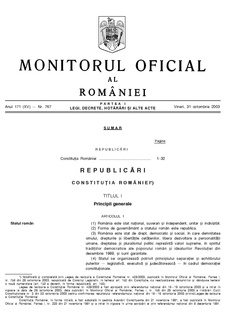
The current Constitution of Romania is the seventh permanent constitution in modern Romania's history. It is the fundamental governing document of Romania that establishes the structure of its government, the rights and obligations of citizens, and its mode of passing laws. It stands as the basis of the legitimacy of the Romanian government. Adopted on 21 November 1991, it was approved on 8 December 1991 in a national referendum and promulgated on the same day.

Mihai Antonescu was a Romanian politician who served as Deputy Prime Minister and Foreign Minister during World War II, executed in 1946 as a war criminal.

The Transnistria Governorate was a Romanian-administered territory between the Dniester and Southern Bug, conquered by the Axis Powers from the Soviet Union during Operation Barbarossa and occupied from 19 August 1941 to 29 January 1944. Limited in the west by the Dniester river, in the east by the Southern Bug river, and in the south by the Black Sea, it comprised the present-day region of Transnistria and territories further east, including the Black Sea port of Odessa, which became the administrative capital of Transnistria during World War II.
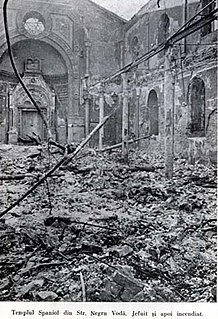
Between 21 and 23 January 1941, a rebellion of the Iron Guard paramilitary organization, whose members were known as Legionnaires, occurred in Bucharest, Romania. As their privileges were being gradually removed by the Conducător Ion Antonescu, the Legionnaires revolted. During the rebellion and subsequent pogrom, the Iron Guard killed 125 Jews, and 30 soldiers died in the confrontation with the rebels. Following this, the Iron Guard movement was banned and 9,000 of its members were imprisoned.

Presidential elections were held in Romania in 2009. The first round took place on 22 November, with a run-off round between the top two candidates Traian Băsescu and Mircea Geoană on 6 December 2009. Although most exit polls suggested a win for Geoană in the runoff, the authorities declared Băsescu the narrow victor with 50.33% of the votes. To date, it is the closest election in Romanian history.
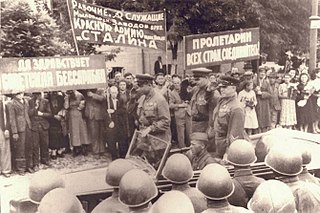
The Soviet occupation of Bessarabia and Northern Bukovina took place from June 28 to July 3, 1940, as a result of an ultimatum by the Soviet Union to Romania on June 26, 1940, that threatened the use of force. Bessarabia had been part of the Kingdom of Romania since the time of the Russian Civil War and Bukovina since the dissolution of Austria-Hungary, and Hertsa was a district of the Romanian Old Kingdom. Those regions, with a total area of 50,762 km2 (19,599 sq mi) and a population of 3,776,309 inhabitants, were incorporated into the Soviet Union. On October 26, 1940, six Romanian islands on the Chilia branch of the Danube, with an area of 23.75 km2 (9.17 sq mi), were also occupied by the Soviet Army.

The National Legionary State was a totalitarian fascist regime which governed Romania for five months, from 14 September 1940 until its official dissolution on 14 February 1941. The regime was led by General Ion Antonescu in partnership with the Iron Guard, the Romanian ultranationalist, antisemitic and anti-communist organisation. Though the Iron Guard had been in the Romanian Government since 28 June 1940, on 14 September it achieved dominance, leading to the proclamation of the National Legionary State.

Constantin Tobescu was a Romanian general of the Romanian Gendarmerie (Jandarmeria) during World War II, deserter during the King Michael's Coup of August 23, 1944, one of the principal executors of Ion Antonescu's racial purity policies.

Maria Antonescu was a Romanian socialite and philanthropist and the wife of World War II authoritarian Prime Minister and Conducător Ion Antonescu. A long-time resident of France, she was twice married before her wedding to Antonescu, and became especially known for her leadership of charitable organization grouped in the Social Works Patronage Council organization, having Veturia Goga for her main collaborator. The Council profited significantly from antisemitic policies targeting Romanian Jews, and especially from the deportation of Bessarabian Jews into Transnistria, taking over several hundred million lei resulting from arbitrary confiscations and extortion.
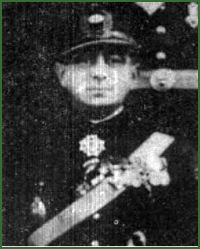
Constantin Petrovicescu was a Romanian soldier and politician, who served as Interior Minister from September 14, 1940 to January 21, 1941 during the National Legionary State.

A referendum on modifying the size and structure of the Parliament from the current bicameral one with 137 senators and 334 deputies to a unicameral one with a maximum of 300 seats was held in Romania on 22 November 2009, at the same time as the first round of the 2009 presidential election. Electors were asked two questions on two separate ballots:
- Do you agree to Romania's adoption of a unicameral Parliament?
- Do you agree to the reduction of the number of parliamentarians to a maximum of 300 persons?

Legislative elections were held in Romania on 9 December 2012. The Social Liberal Union (USL) of Prime Minister Victor Ponta won an absolute majority in both the Chamber of Deputies and the Senate. Despite the severe weather in parts of the country, the turnout was at 42%, slightly higher than the last legislative elections held in 2008 which saw a turnout of 39%.
A referendum on the policies of Ion Antonescu was held in Romania on 5 March 1941. Under pressure from Nazi Germany, King Carol II had appointed Antonescu as Conducător on 6 September 1940. Voting was done orally, with voters answering yes or no. Silence was taken to be a "yes". The referendum was approved by 99.9% of voters. A second referendum on Antonescu's policies was held in November.
The 2012 Romanian constitutional crisis was a major political and constitutional conflict between President Traian Băsescu and Prime Minister Victor Ponta of Romania. A dispute arose between the two regarding the representation of Romania to the European Council reunion of June 28, 2012. The dispute degenerated in civil disobedience and conflicting views between political parties. On 12 December 2012, Băsescu and Ponta signed an agreement on institutional cohabitation, effectively ending the crisis.
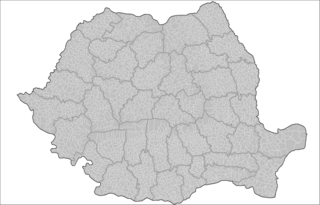
A referendum on impeaching President Traian Băsescu was held in Romania on 29 July 2012. The referendum was required after Parliament voted in favour of impeaching Băsescu on 6 July, and had to take place within a month. It was the second referendum on impeaching Băsescu, the first having been held in May 2007, in which 74% of voters chose to keep him in office. Băsescu was later narrowly re-elected in 2009.
Events from the year 1941 in Romania.














